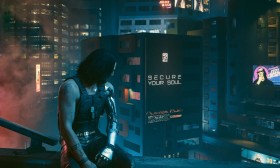Of all the gaming genres, the Japanese Role-Playing Game (JRPG) stands as a pillar of narrative depth, strategic combat, and character-driven progression. Two of its most iconic franchises, Fire Emblem and Super Mario, have ventured far beyond their core identities to create spin-offs that reimagine their worlds and mechanics. Yet, their approaches to this expansion are diametrically opposed, representing two distinct philosophies of what a spin-off can and should be. While Mario RPG spin-offs like Super Mario RPG, Paper Mario, and Mario & Luigi use the JRPG framework to deconstruct and celebrate the core Mario universe, Fire Emblem’s spin-offs, such as Fire Emblem Warriors and Tokyo Mirage Sessions #FE, use their established lore as a foundation to cross-pollinate with entirely separate genres and ideas. One looks inward for inspiration; the other looks outward.
The Mario RPG lineage is a masterclass in introspective spin-off development. The core Mario series is built on timeless, simple principles: jump on enemies, rescue the princess, and explore vibrant worlds. The JRPG format provided a unique canvas to explore the nuances of this universe that platformers never could. Games like Super Mario RPG: Legend of the Seven Stars and the Paper Mario series didn’t just add turn-based combat; they gave Mario’s world a voice, a personality, and a surprising amount of lore. Characters like Geno and Mallow became instant classics, while established ones like Bowser were granted hilarious depth and motivation—often as a reluctant ally or a comically inept villain.
The genius of these spin-offs lies in their mechanics, which are direct translations of platforming verbs into JRPG terms. The timed hits (Action Commands) system is the quintessential example. Pressing a button at the right moment to increase an attack’s power or block incoming damage is a brilliant JRPG-ification of the precise timing required in a platformer. It keeps the player engaged in a genre often criticized for passive gameplay and directly connects the spin-off’s identity to its source material. The worlds are filled with familiar enemies and locations, but explored through a new lens of puzzle-solving, dialogue trees, and character interaction. The goal is not to be a different game but to be a deeper version of a Mario game.
In stark contrast, Fire Emblem’s spin-offs are exercises in extrapolation and fusion. The core Fire Emblem experience is already a dense, narrative-heavy tactical JRPG. Its identity is not simplicity but complexity: permadeath, weapon triangles, deep support conversations, and grand political narratives. Therefore, its spin-offs don’t seek to deepen that core; they seek to transplant it into new genres to see how it grows.
The most prominent example is the Fire Emblem Warriors series. This series takes the vast roster of characters from across the franchise and drops them into the musou (hack-and-slash) genre popularized by Dynasty Warriors. The connection to the source material is more thematic than mechanical. The strategic, grid-based combat is replaced with real-time, crowd-clearing action. However, the spin-off retains the spirit of Fire Emblem through its Rock-Paper-Scissors weapon triangle, which imposes a layer of tactical unit management onto the action chaos, and the importance of building support levels between characters. It’s a celebration of the franchise’s characters and worlds, rather than a direct exploration of its core gameplay. It’s Fire Emblem as a power fantasy.
The most radical and fascinating spin-off is Tokyo Mirage Sessions #FE. This game is a full-blown crossover with Atlus’s Shin Megami Tensei series, and it feels far more like a mainline SMT or Persona game than a Fire Emblem one. The setting is modern-day Tokyo, the combat is based on exploiting enemy weaknesses in a flashy, combo-driven system (Sessions), and the progression revolves around idol culture. The Fire Emblem elements are present but recontextualized: characters are “Mirages” based on Fire Emblem heroes like Chrom and Caeda, and weapons like swords and lances replace the traditional SMT demons. This spin-off uses Fire Emblem’s iconography as a foundational ingredient in a completely new recipe. It’s not trying to be a Fire Emblem game; it’s trying to be a new thing that could only exist because of Fire Emblem.
This fundamental difference in approach stems from the nature of their original franchises. Mario’s world is a blank slate of pure gameplay. Its spin-offs have the freedom and the necessity to build a personality around that gameplay. The JRPG format was the perfect tool for that construction. Fire Emblem’s world, however, is already overflowing with personality, lore, and complex rules. Its spin-offs are freed from the burden of world-building and can instead experiment with how its well-established parts can function in alien environments.
Ultimately, neither approach is superior; they are simply different responses to different creative opportunities. The Mario RPGs are love letters to their own universe, using the JRPG’s tools to ask, “What else can these characters be?” and “What stories can we tell here?” They are insular and focused. The Fire Emblem spin-offs are bold experiments in genre fusion, asking, “How does our formula work when smashed together with another?” and “Can our identity survive this translation?” They are external and expansive. Together, they showcase the incredible versatility of the JRPG format itself—a framework capable of both deepening a beloved world and launching it into thrilling, uncharted territory.















